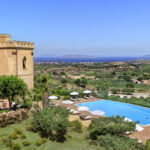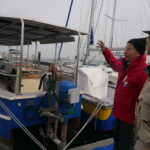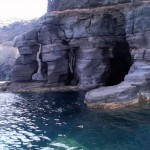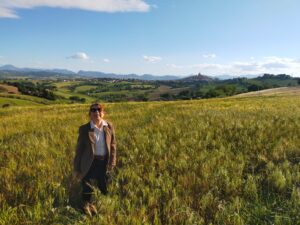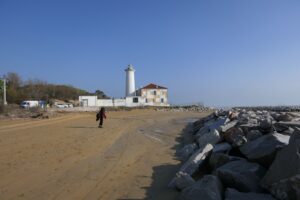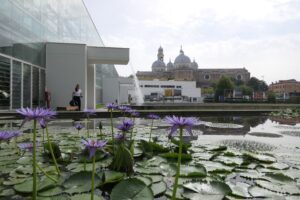Rent a car or an electric car for your next trip at a special price
Electric Escapade in Sicily
Following Sicily by Car’s historical eco-itinerary Donna Sicilia
by Libby Key
Our electric Mokka Opel car glinted under the Palermitan sun as we walked over to the ‘Sicily by Car’ hire section of Falcone Borsellino airport. Green as a Noccelara olive, its matte exterior catches your eye. “All good to go?” we asked the representative. “Yes, have a beautiful stay in Sicily!” they replied, and we were on our way. I thew the keys over to my husband (he’s Italian, I’ll explain later) and we started our mini adventure.
Before I delve into details, let me tell you a little about our itinerary. Donna Sicilia is a brand-new initiative launched by Sicily by Car where tourists can hire an electric car and choose from a circuit of 19 historic residences which all have charging stations on-site. The goal is to promote the beauty of the island without damaging it because the electric cars emit zero CO2 emissions. We were lucky to be some of the first guests to try out this travel plan so with sun, sea, and sustainability in sight, we booked three residences in western-Sicily and started our journey.
Now it’s been a minute since I’ve been in Sicily. The last time I was here, I was wondering round Ballarò market as a young language student with a tattered copy of “The Leopard” (Il Gattopardo) by Giuseppe Tomasi di Lampedusa in my bag, so it felt very significant that the first stop on this eco-tour of Sicily was the author’s very own home in Palermo, Villa del Gattopardo.
Day 1: Villa del Gattopardo, Palermo – literary boutique villa
Villa del Gattopardo didn’t exist five years ago. Well, it did, but it was a total ruin. Its literary ties began with Giulio Tomasi IV, Tomasi di Lampedusa’s father, who bought the villa in 1845 with compensation money from the Bourbon government, following their expropriation from the island of Lampedusa (hence the name di Lampedusa). It was a summer residence for the family and Giuseppe wrote his famous book here. However, centuries later and the villa became dilapidated.
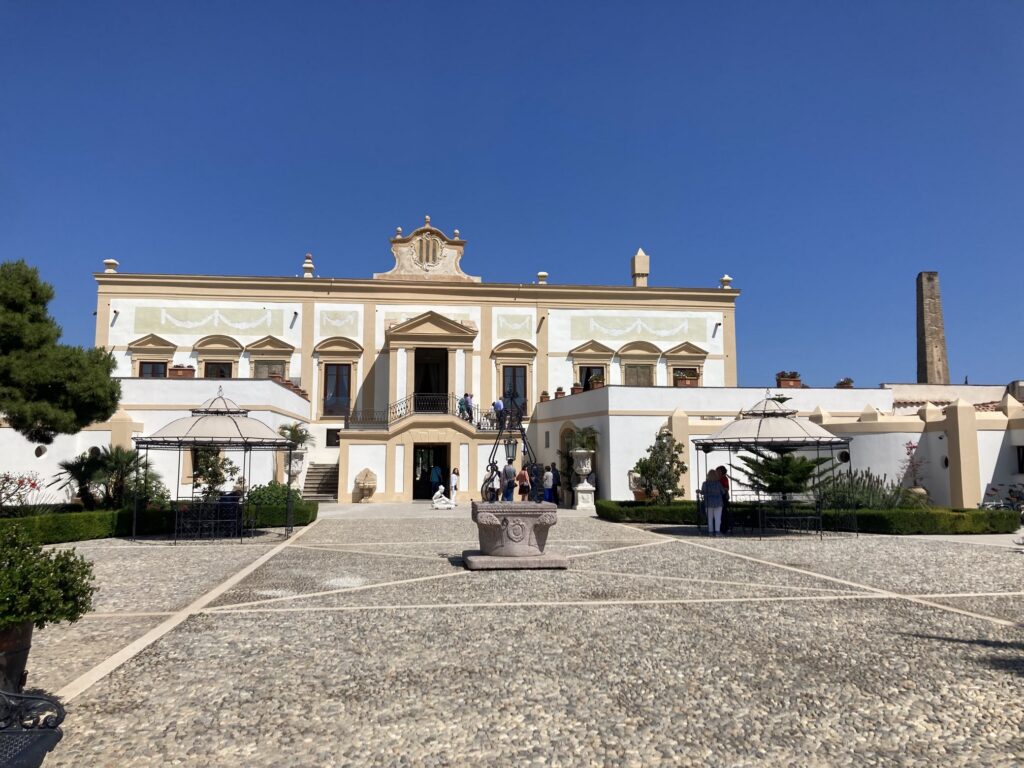
Fortunately, the villa’s story didn’t end there as Sicily by Car CEO Tommaso Dragotto purchased the villa and commissioned an eye-watering six-million-euro restoration as a labour of love and homage to his homeland. The work was overseen by architects Katia Balistreri and Franco Di Peri of Ekklesiasteron Restauro, and the results are for no better word, meravigliosi. “I am well aware that I will never get back the money spent on the restoration” – Dragotto is quoted as saying, “but the degree of civilization of a people is measured by the beauty it produces, protects, and preserves. It is a moral duty to every future generation.” (Source: Ansa).
The villa is enchanting. It has been transformed into a boutique ten-suite luxury hotel, complete with SPA and tennis courts on the way, but maintains a fairy-tale character. The details of the rooms are not to be missed. We stayed in “suite mandorleto” and found tastefully chosen antique furniture, fresco walls, Neapolitan chandeliers, fluffy white house robes embroidered with Villa Gattopardo starched handkerchiefs in crystal bowls and jelly sweets in a jar.
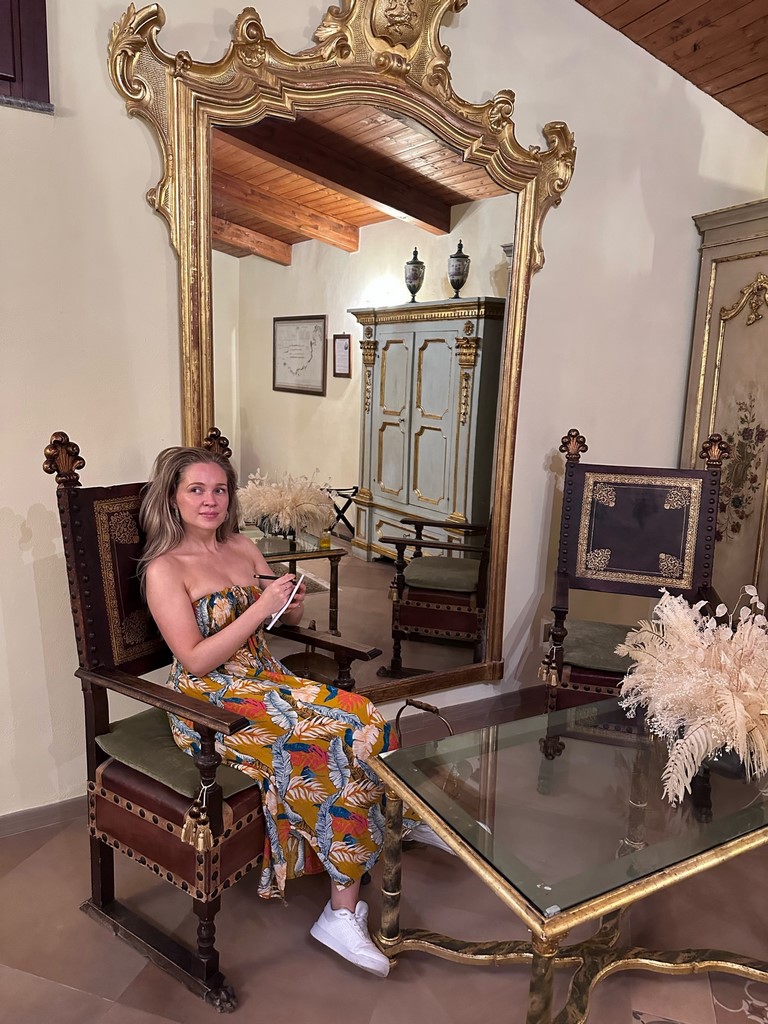
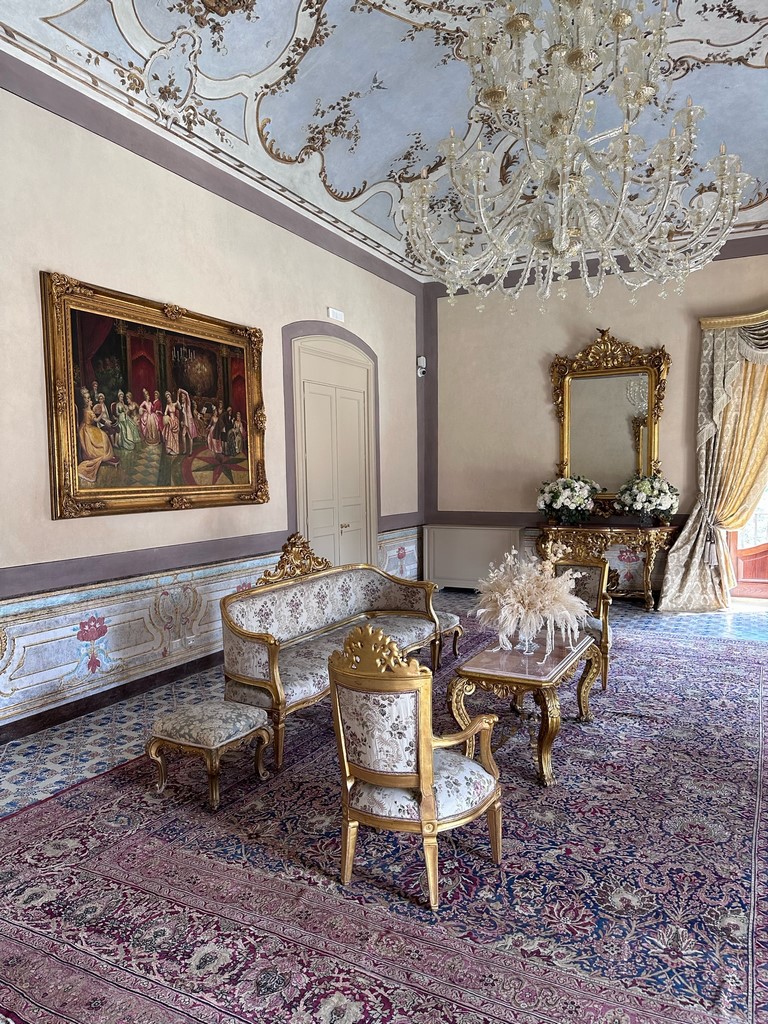
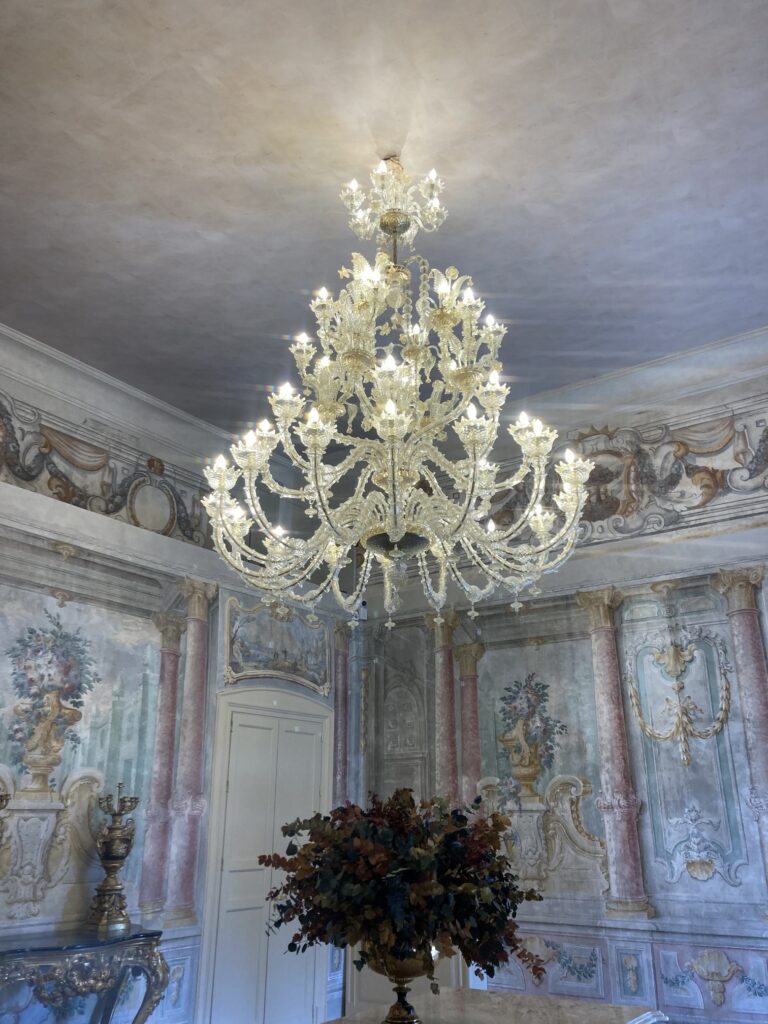
“The architects were able to recover 90% of the villa’s original condition,” the hotel manager tells us as she gives us an impromptu tour. We found ourselves staying on a certain Sunday in when it was temporarily open to the public for a tour (it is now a private hotel), so we became part of a throng of eager locals and Italian tourists coming to see the transformation. We are brought around the main villa itself, upstairs into the rooms of pastel frescos and high ceilings. We spoke with Giovanni Bosco, a long-standing Palermitan resident who was visiting the villa.
“I believe that every Palermitan appreciates the effort made to recover the history of this city, affectionately known as “Palermo felicissima,” he said. “It draws attention to the historical, artistic and cultural heritage or Palermo, which has always been the cradle of civilisation,” he added.
You can really understand how a book was written here: there is a quiet cobbled quad with wrought iron benches for musing, and at night, everything is gently illuminated under a Sicilian blue-midnight sky. You can walk outside in the gardens, see the rushing fountains and the astronomical tower which the protagonist in “The Leopard” loved so much.
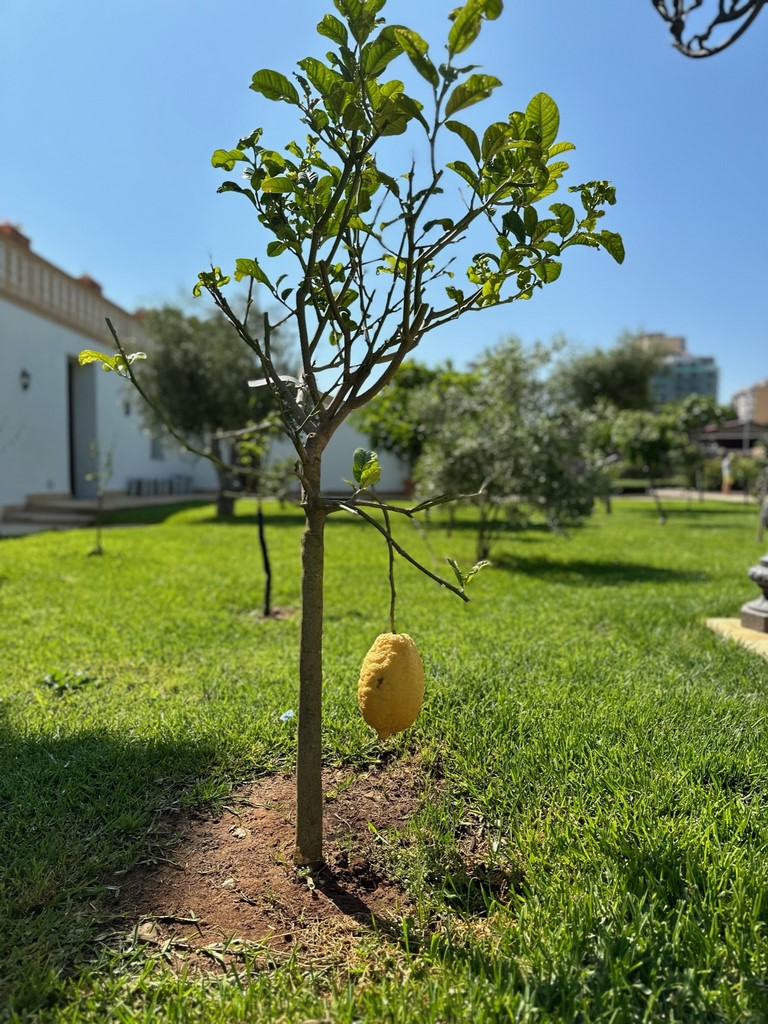
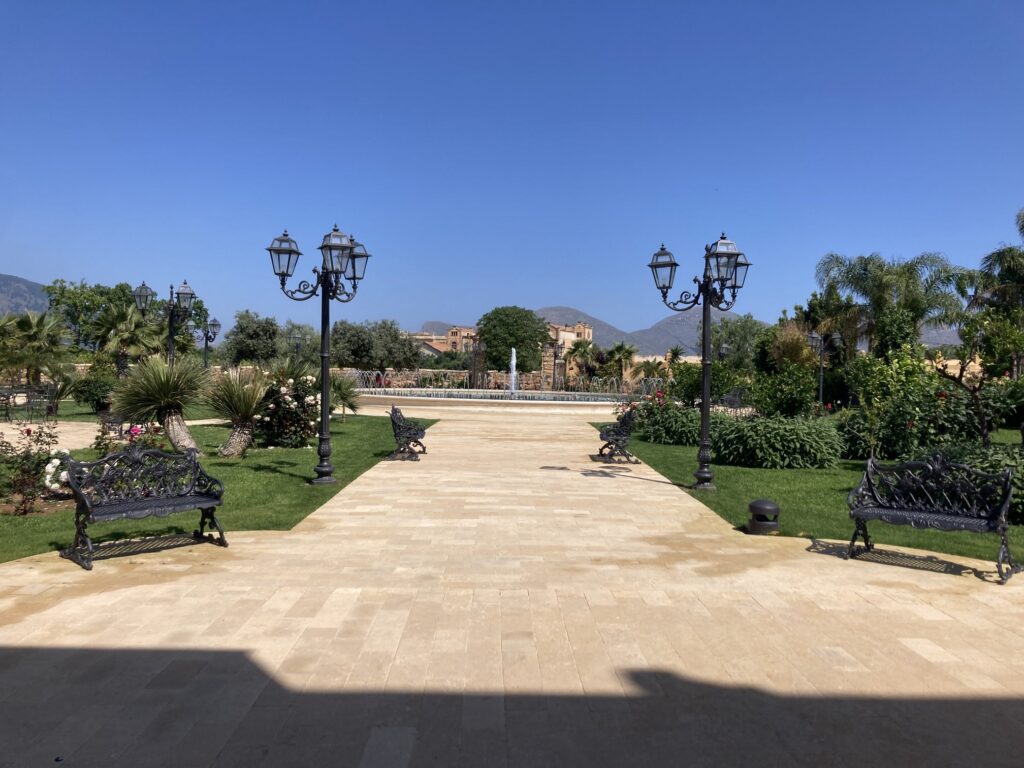
This villa would once have been in the middle of the countryside: the Palermitan city didn’t rise up around it as it does today. However, it still feels as much an oasis as I’m sure it did then. The local neighbourhood is sleepy and pleasant, with tables full on a sabato sera with locals eating delicious pizza and it was a perfect location start our adventure – only 15 minutes’ drive to Palermo and ten minutes from Mondello beach.
In the morning, we dined in a princely fashion on a continental breakfast with silverware that looked like it came straight out of Beauty and the Beast. Our bellies were full to take us on our next stop, so we downloaded the ENEL app which conveniently locates all of the electric charging stations nearby and headed to the closest space to charge. As explained, I let my husband drive for this trip: being a northern-European, I don’t even know how to use the horn on my car – it is normally only used by accident or in cases of exasperation. Here, it’s another form of communication. Nonetheless, our driving experience so far had been excellent, and the car was so silent and smooth, it felt like travelling by cloud.
Day 2: Baglio Oneto, Marsala – rustic farmhouse turned luxury wine-resort
For our next stop we drove to Baglio Oneto in Marsala; an ancient farmhouse (1700) still managed by the Oneto family which now runs as a five-star-luxury wine-resort. The joy of this place is that it is surrounded by vineyards that make the nine different types of wine and olive-oil you can enjoy at dinnertime. Whatsmore, the friendliness of the staff remind me of why I fell in love with this Mediterranean island: you encounter a rare generosity and hospitality doesn’t really exist in the UK.
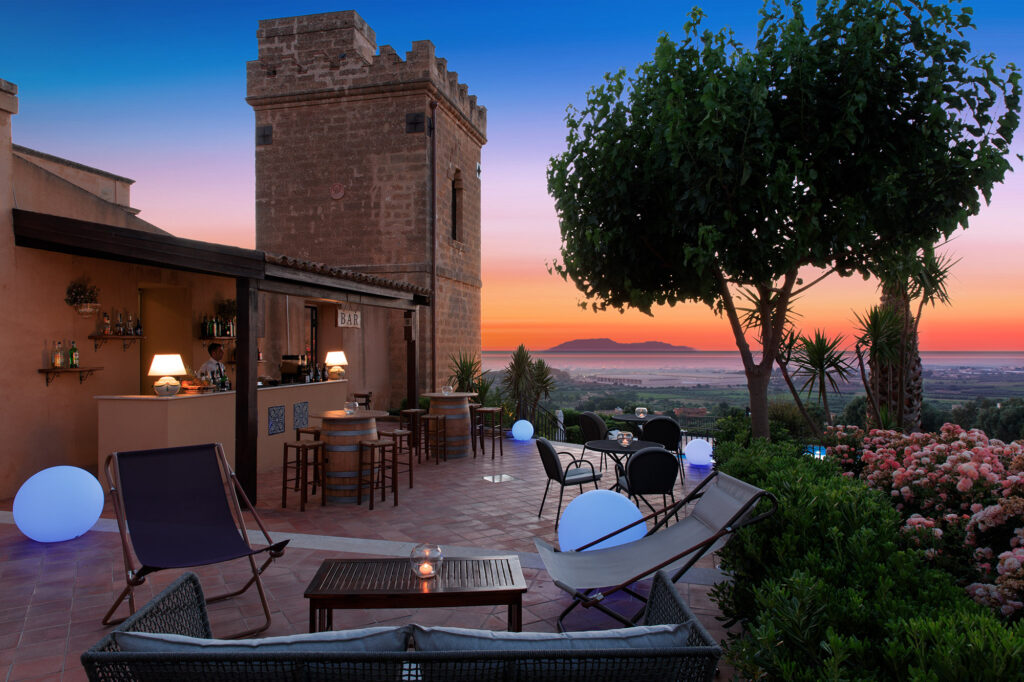
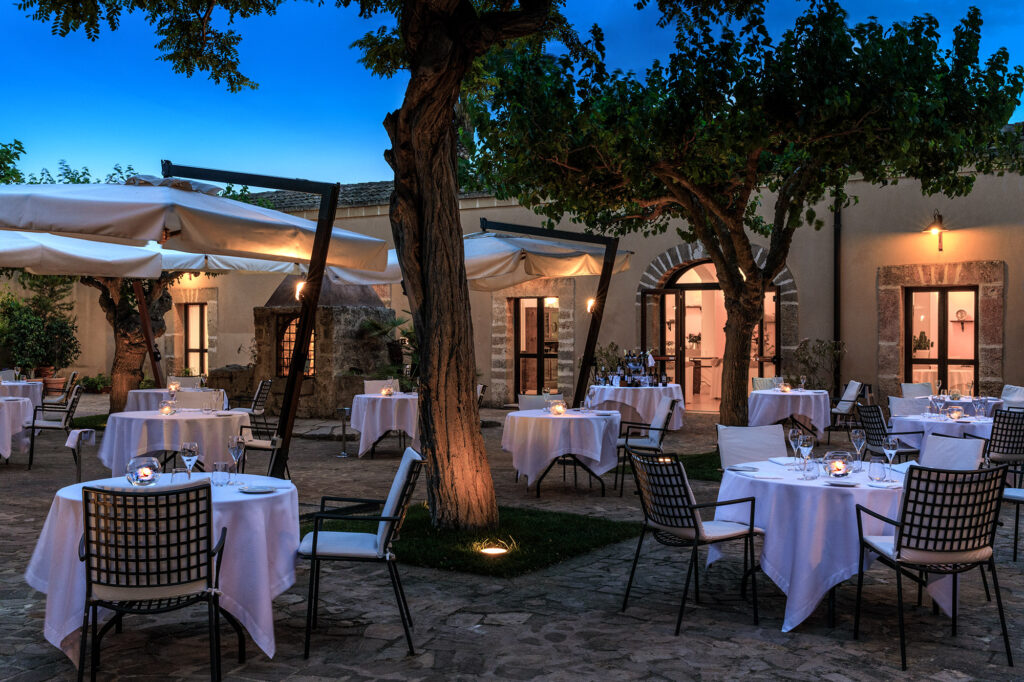
Chiara, the hotel manager takes us around like a mother hen and points to the view from the pool where the sea meets the sky in a seamless blend. The historic courtyard where guests now dine outside, she describes is “the beating-heart of its grounds. “Just inhale,” she tells us, “That’s fresh rose, mint and jasmine” she continues, and we smile as we identify the aromas that scent the air.
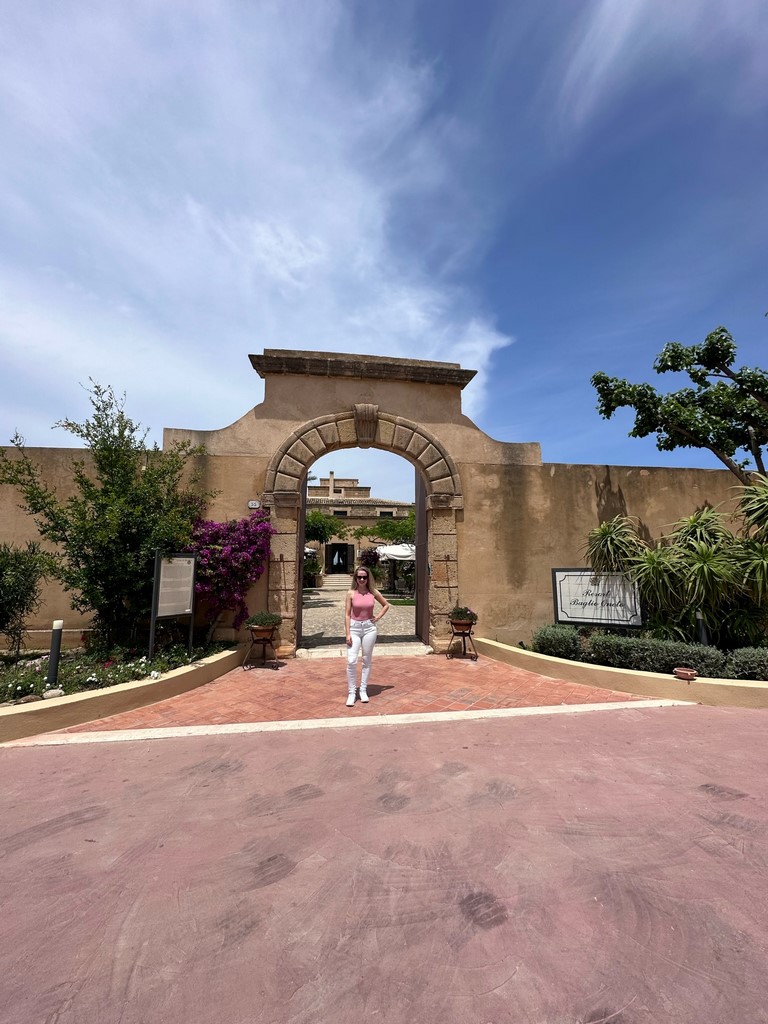
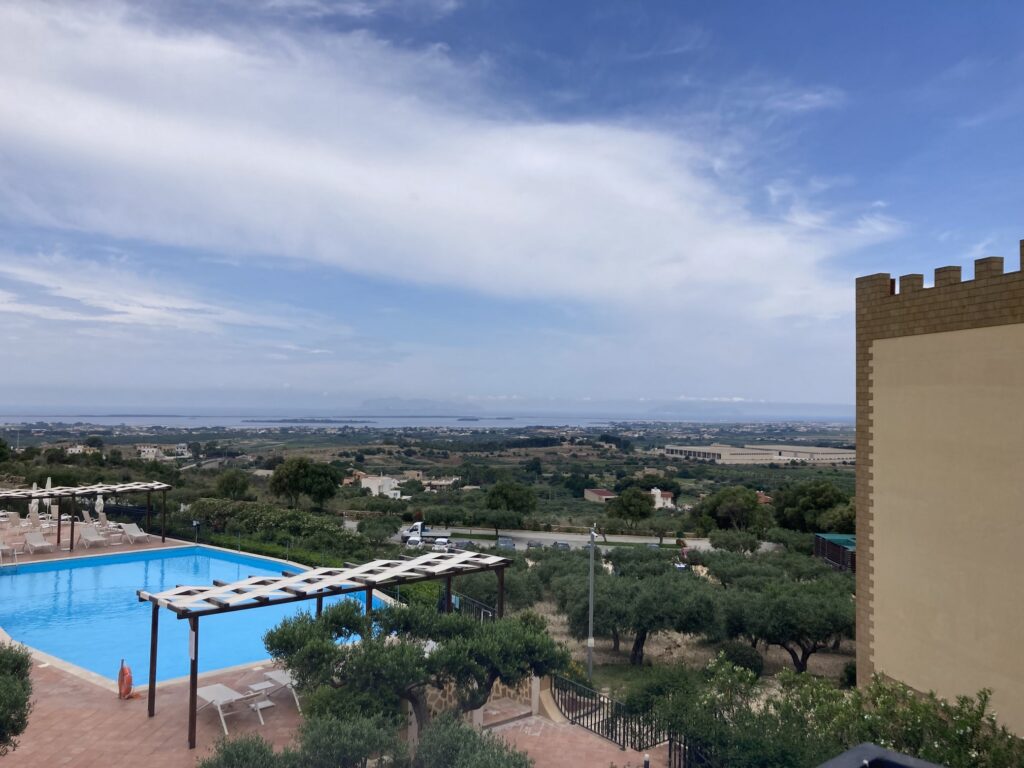
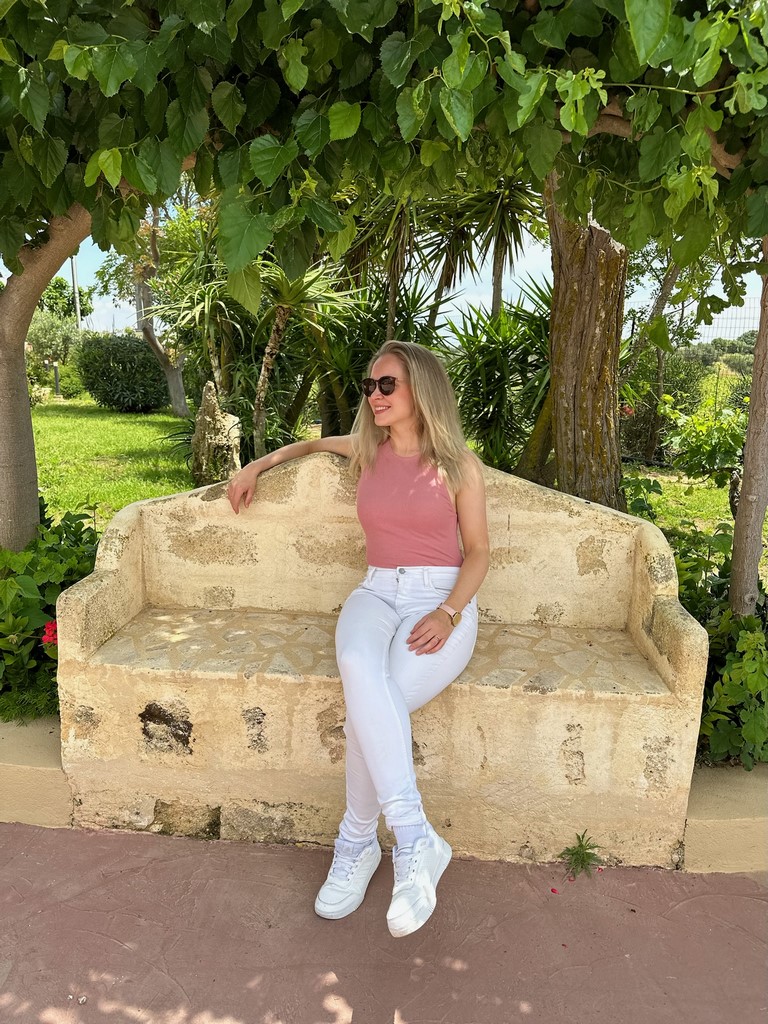
It’s no secret that Marsala is famous for its sweet wine, in fact, the in-house sommelier lovingly recounts that it was the first ever Italian wine that was exported from the peninsula in the 1800’s. We sample the local Zibbibo wine for the hotel’s wine-tasting in their cool cellar where celebrities such as Harrison Ford have also sipped and take in the moment.
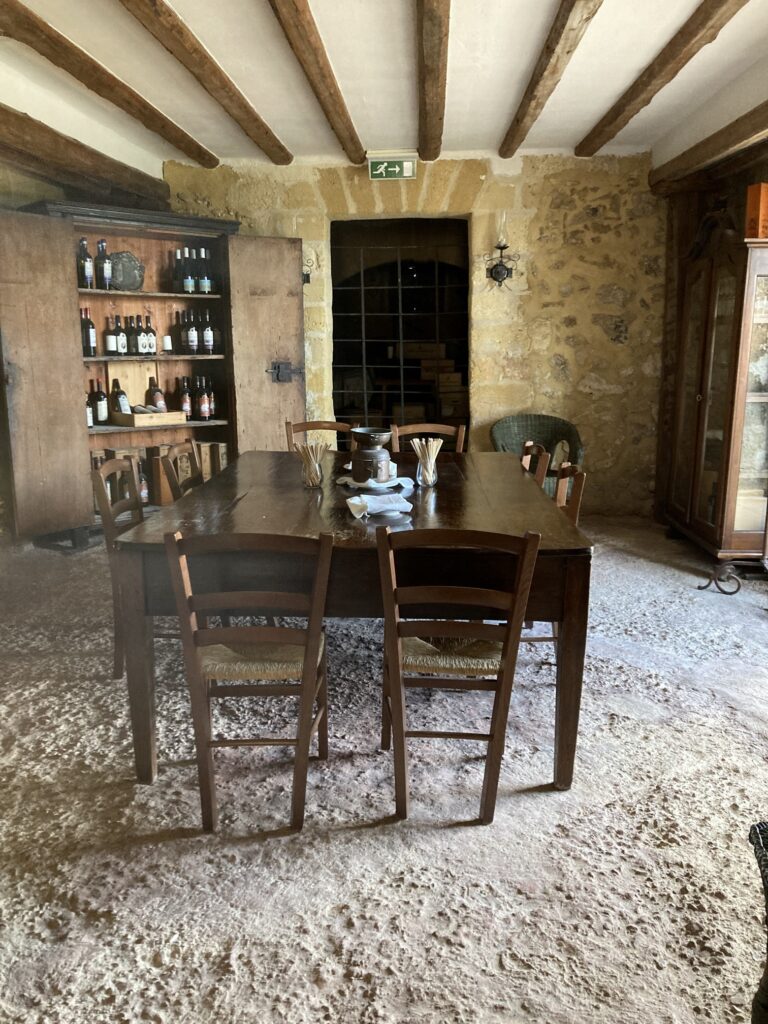
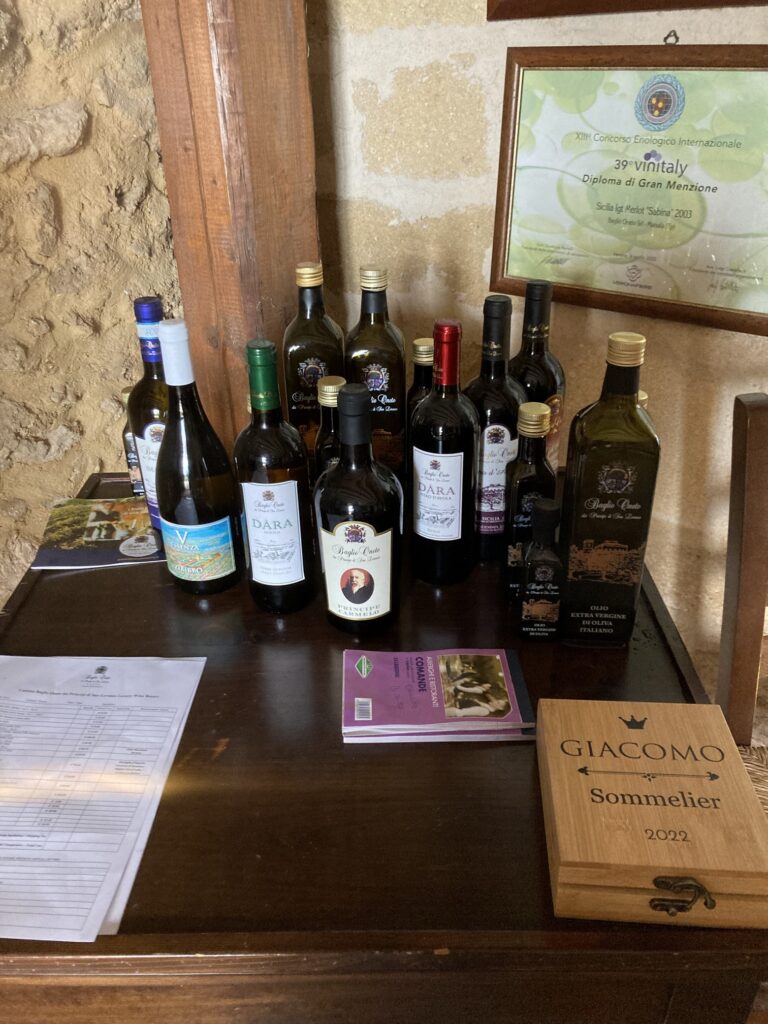
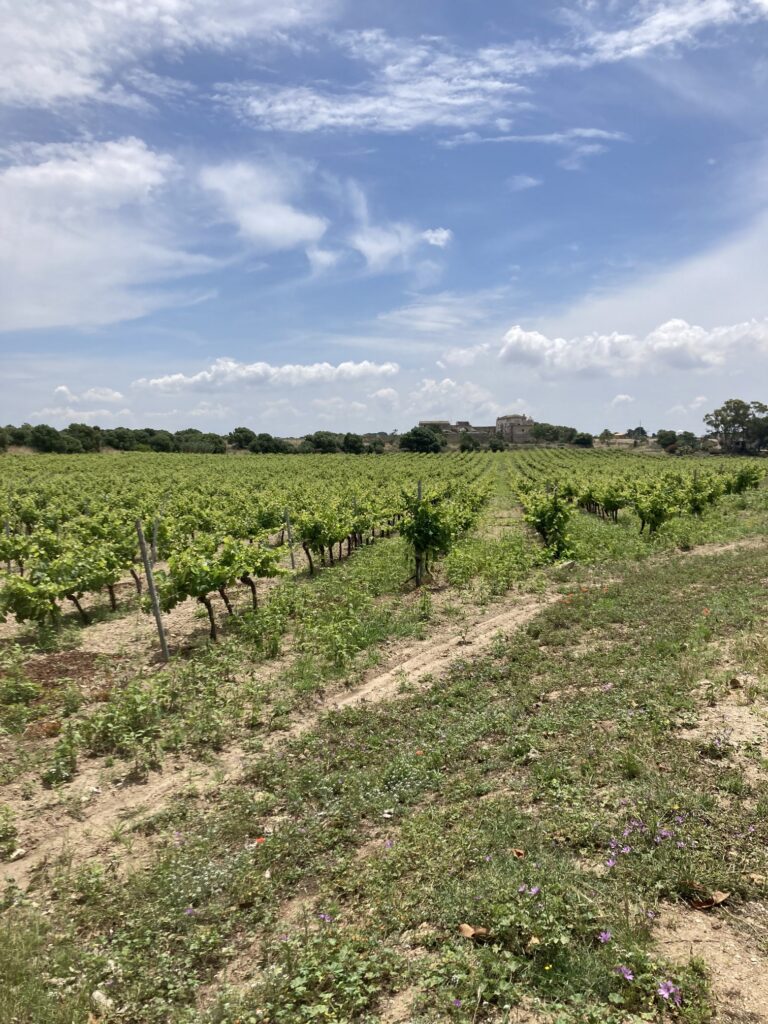
The food here is stunning. Think Michelin-star presentation and flavours that make you close your eyes, die, and go to foodie heaven. They proclaim their restaurant as ‘a renaissance for all the senses’ and I would whole-heartedly agree. We went for a crudité a tutto tondo, a mixed seafood tartare which tasted as fresh as a sea breeze and gnocculi di tonnara, typical Marsala fresh handmade pasta with a tuna, tomato, garlic, and mint sauce. Take me back! The staff at Baglio Oneto are passionate and not phased about staying in their lane. The bartender shows us their cocktail list which features the ‘Mojito pantesco’ – a signature cocktail inspired by the Pantelleria islands near Trapani and how they have managed to create a jus from local, red wine to use as a sweet base for some of their other drinks.
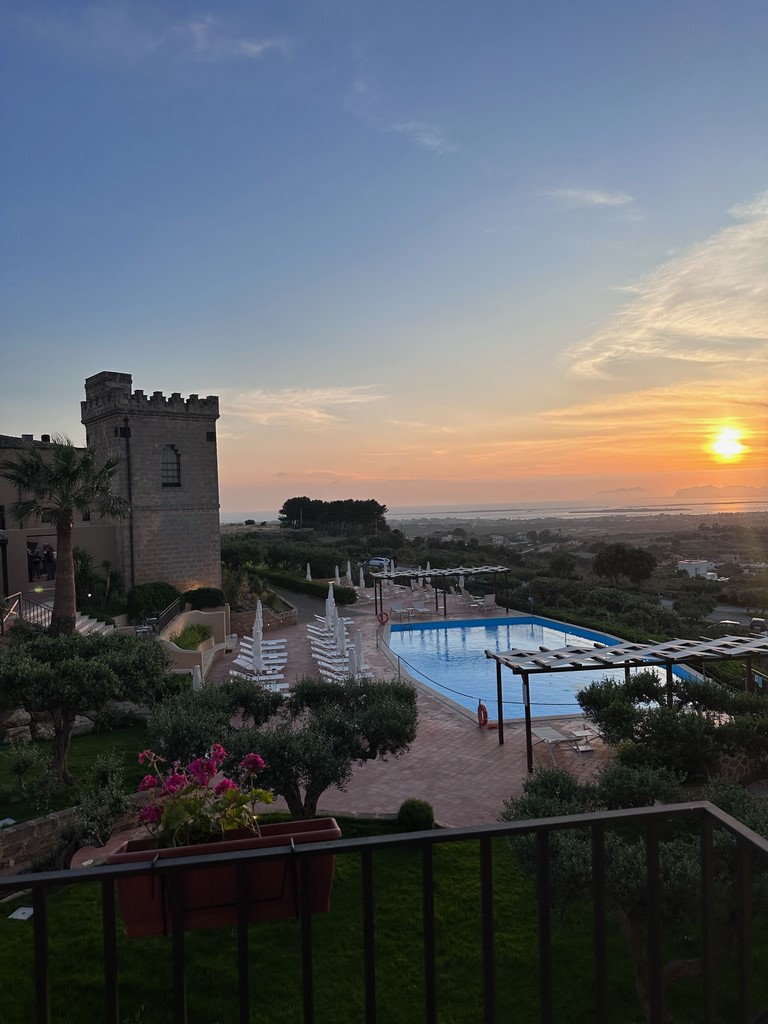
Call me girly as heck, but I also particularly enjoyed the carefully wrapped Gattopardesque Ortigia Gattopardo soap in the bathrooms. A leopard-themed journey of this land was unfolding before me.
Day 3: Castello San Marco, Santa Flavia – characterful castle in a botanic paradise
Grand, green gates swung open before us, ushering us to our final destination on the outskirts of Palermo, Castello San Marco. It must have been an intriguing contrast to watch our modern car gliding gracefully towards the ancient castle’s charging station, but this really does define the essence of this travel experience: the pages of history blend seamlessly with the forward-looking spirit of sustainability.
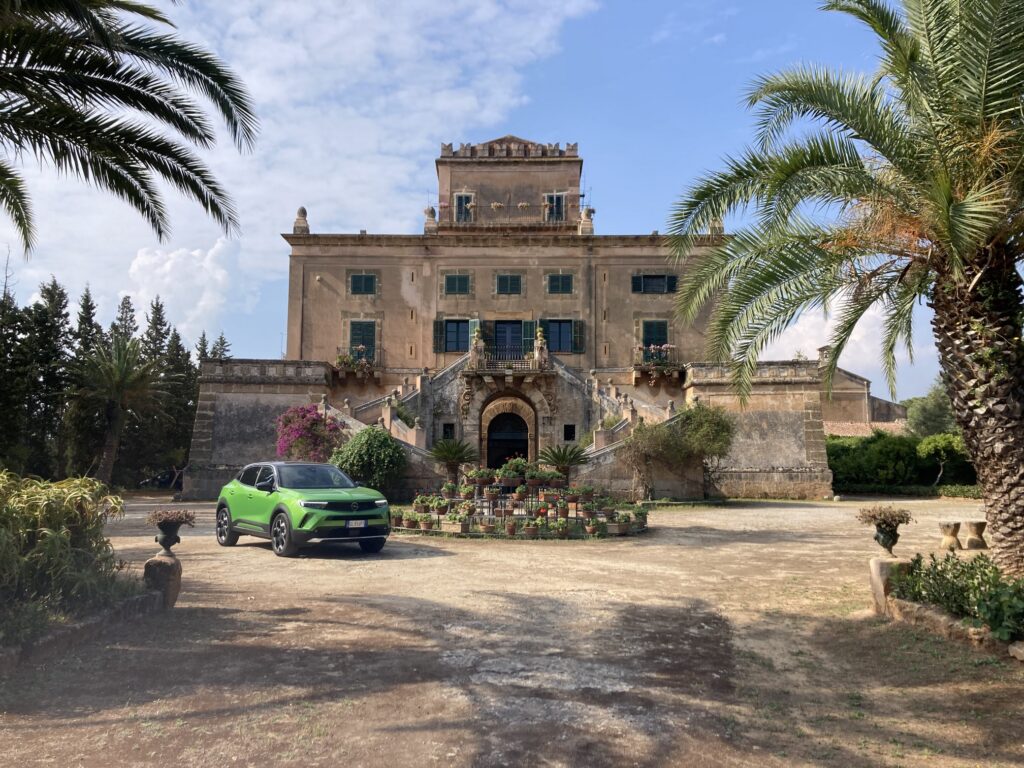
The Manor was once an aristocratic summer estate much like Villa Gattopardo and happened to also be one where Giuseppe Tomasi di Lampedusa stayed during WW2. It started out as a single fortified tower, built as a refuge against pirates who used to steal sugar cane, and was extended by architect and Dominican priest, Domenico Cirrincione. The main structure is still inhabited by the descendants of the original owner, Mirto, and there are two apartments open for guests which are exceptionally clean and simply decorated.
The delight of this manor are the grounds. With three hectares of land, the manor has its very own botanical garden where flowering cacti grow harmoniously alongside Sicilian lemons. The garden is a shady paradise. Trees drip with tangerines, birds sing in symphony, bright pink bougainvillea punctuate the greenery and turquoise swimming-pool shines like glass in the sun. I could write a whole article on this garden alone! The garden has a mixture of exotic plants as well as typical Sicilian vegetation and the owners affectionately know all the plants by their Latin names. My favourite is the silk-floss tree, a striking tree with a trunk swollen like a bottle, covered in sharp spikes with flowers that look like cotton. Legend says the spikes were to ward off monkeys, the owners tell us. Now, it likely only wards off playful children from climbing their spikey trunks.
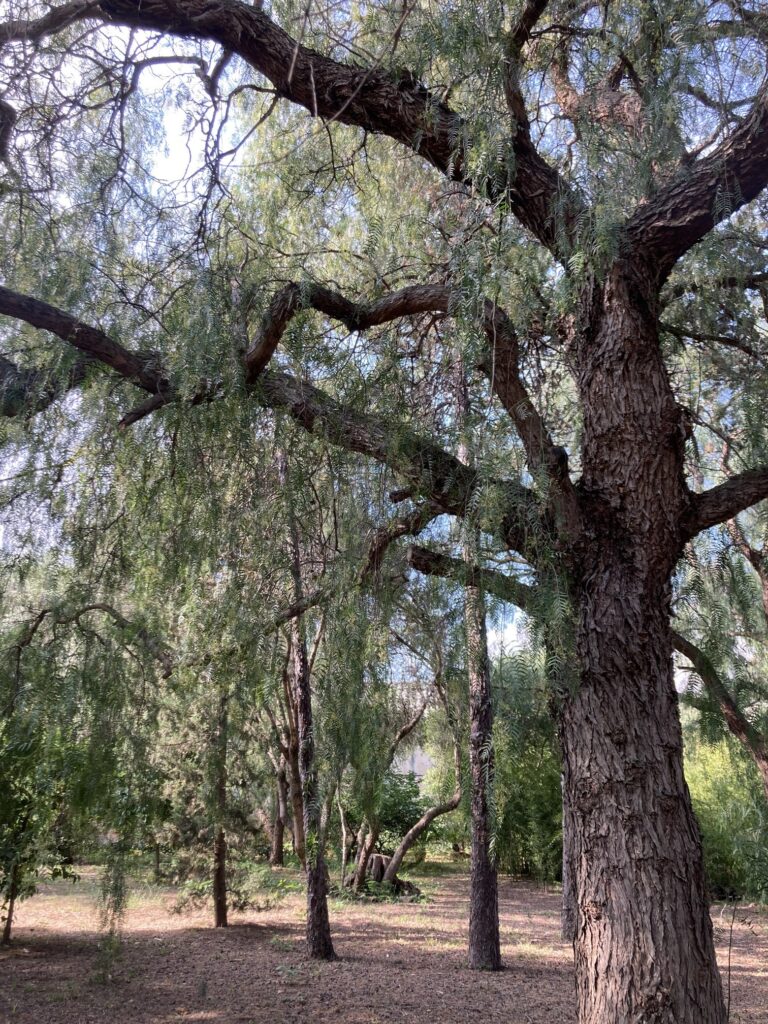
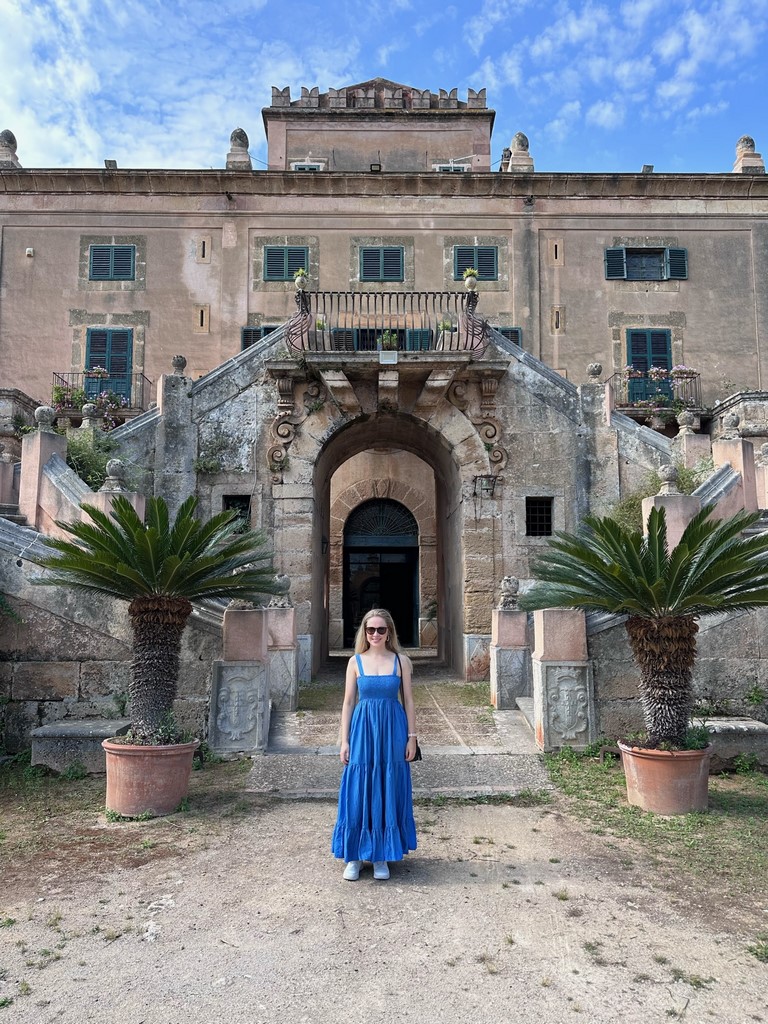
The diversity of the exotic species of the garden reflects the diversity of Sicily’s history – this land was once inhabited by Greeks, Romans, Normans, Bourbons, Byzantine’s and more and being a port city, traders and sailors would have bought seeds from far-flung lands. Other exotic species include Aloe Vera, dragon tree, Yukka plant, Bird of Paradise plant and blue Jacaranda; all native to different lands such as Mexico, Morocco, and Australia. The rest of the garden is typically Sicilian, with citrus trees, olive trees, fig trees and many varieties of jasmine.
We follow the trailing leaves of false pepper that hang like Spanish moss in the shade, their pepper fragrance filling the air and see the castello face-on. The yellow tufa stone contrasts with the forest green shutters, and if you look up you can see the original drawbridge, which would have been pulled up in times of attack. Now, the owner keeps her pot plants there, but they tell us their aunt did used to bring the drawbridge up when she used to leave the house in the 70’s.
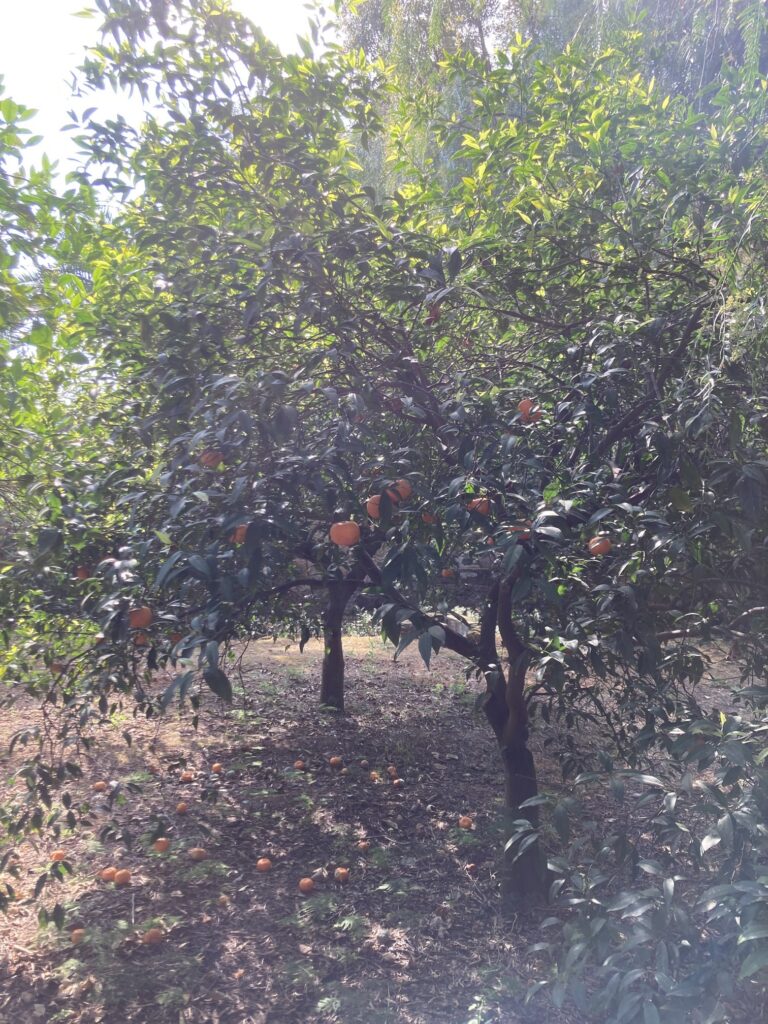
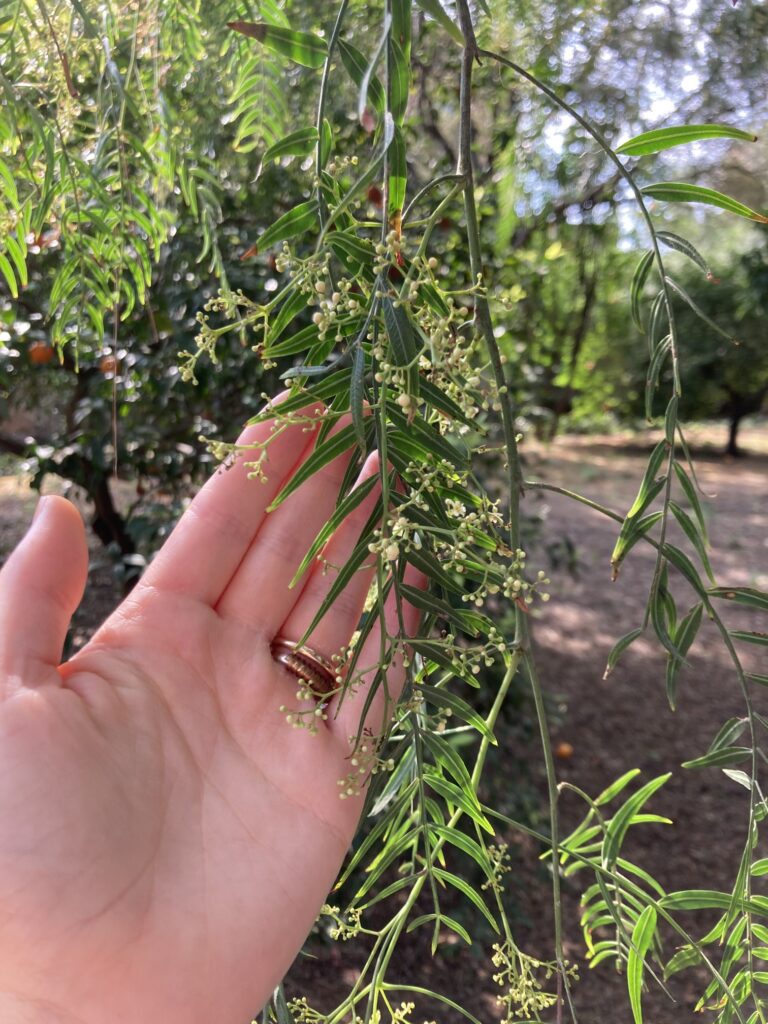
The owners are an affable couple who, although they live in a century-old home, have opened it up for guests to enjoy and seek to continually modernise. Talking about the Sicily by Car itinerary, the owner said: “I find the initiative to install electric columns in step with the times and with the need to promote sustainable tourism. We enthusiastically joined the initiative because we want a more environmentally friendly tourism.”
They recommend we had dinner at ‘Don Ciccio’ in Bagheria – an authentic trattoria, buzzing and humming with local life. The original owner, now in his 80’s, works the cassa and stood up to greet us as we walked in. Tradition dictates that every meal starts with a boiled egg and a shot of Zibbibo wine. We were slightly concerned perhaps this was just something targeted to tourists that didn’t know any better, but quickly saw the other dinner guests doing the same and joined in with the theatrics. Our last meal was just as delicious as the first and we savoured the Sicilian flavours with gusto: a primo of pasta with fresh Sicilian sardines and secondi of stuffed calamari and swordfish skewers.
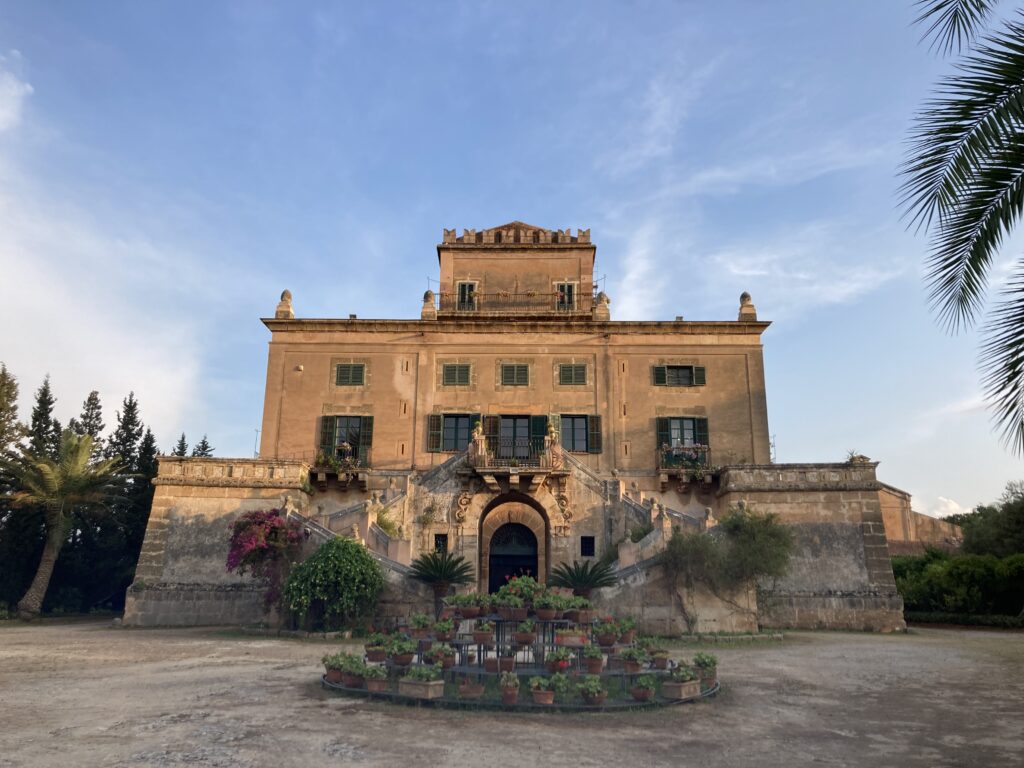
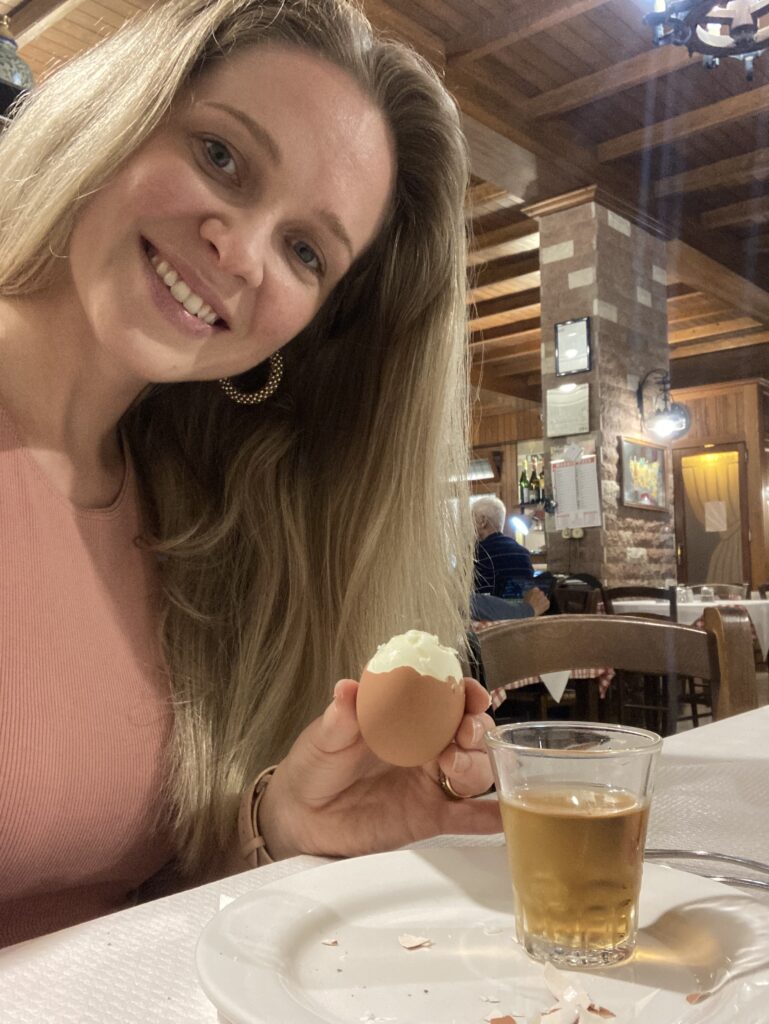
Our eco-Sicilian adventure had come to an end. We parked the Mokka and charged it outside the 17th century castle one last time and checked in for our return flights online. Sicily by Car’s unique itinerary acts as a historical eco-guide to Sicily. It’s perfect for the ecological warriors and history buffs, but also simply a great way to travel the island and immerse yourself in historical narratives, safe in the knowledge that you’re driving a net-zero car.
Buon viaggio, unless you’re a food-loving fool!


